Tours from Errachidia
Tours from Errachidia
The best itineraries:
Unique Desert Tours customizes a variety of desert tours itineraries leaving from Errachidia. Our plans might take us back to Errachidia, Marrakech, Casablanca, or any other destination you like.
Best Morocco landcapes:
Morocco features breathtaking desert and cityscapes. As a result, we will make sure to stop at tourist sites and must-see spots throughout our city trips from Errachidia. The Erg Chebbi sand dunes, for example, and the Ait Benhaddou Kasbah.
Money back guarantee:
When you book one of our Errachidia city or desert tours, you have 15 days to cancel your appointment.
Pure local guides/drivers:
We are Moroccan Berbers with knowledgeable guides and drivers. As a result, you will be accompanied by an English/Spanish speaking driver and, if necessary, a guide during your Errachidia desert tours.
Choose the perfect plan for you
We have designed a number of travel itineraries from Errachidia, including desert tours and city tours. If the plans do not fit your needs, please fill out our contact form.
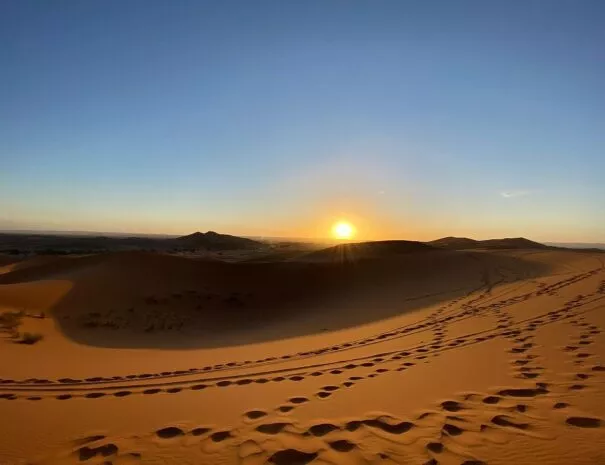
- 2 days tour from Marrakech to Zagora
- 2 days tour from Marrakech to Merzouga
- 2 days tour from Marrakech to Fes
- 3 days tour from Marrakech to Merzouga desert
- 3 days tour from Marrakech to Fes
- 4 days tour from Marrakech to Merzouga desert
- 4 days tour from Marrakech to Fes
- 5 days tour from Marrakech to Merzouga desert
- 5 days tour from Marrakech to Fes
- 6 days tour from Marrakech to Merzouga desert
- 7 days tour from Marrakech to Fes
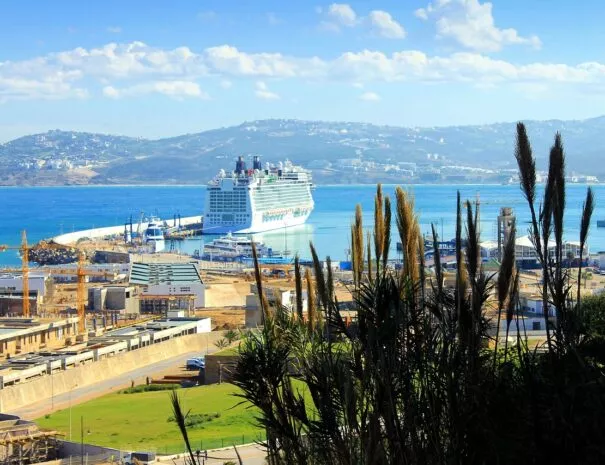
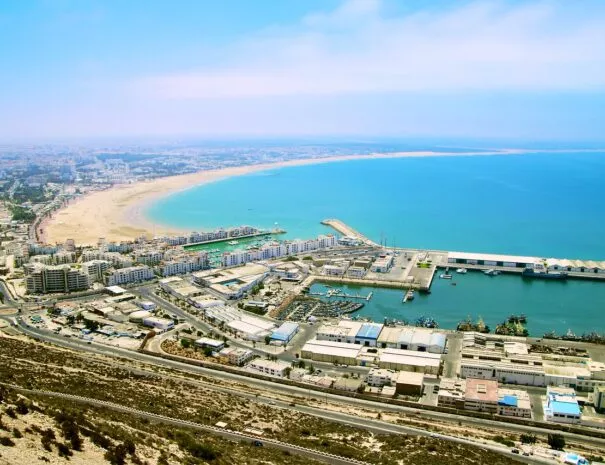
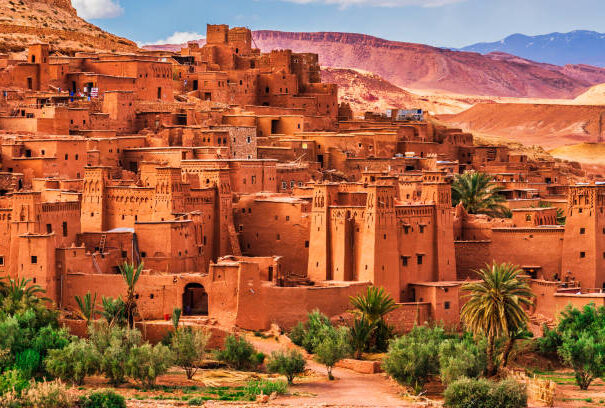
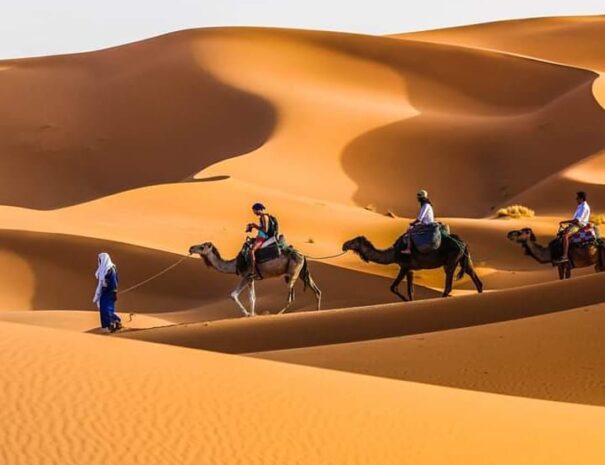
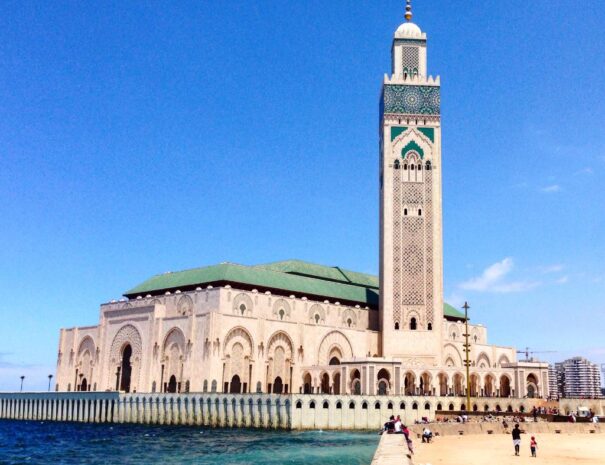
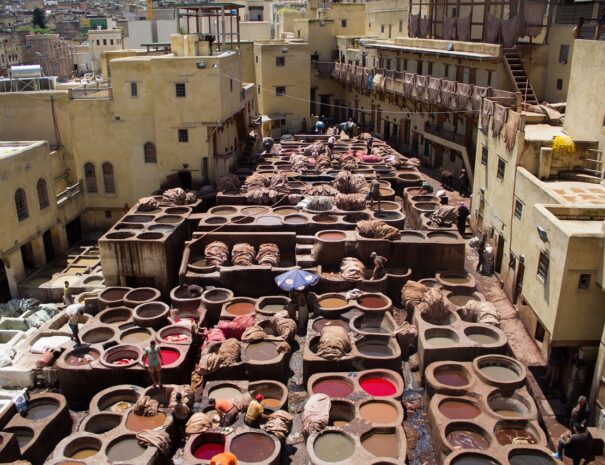
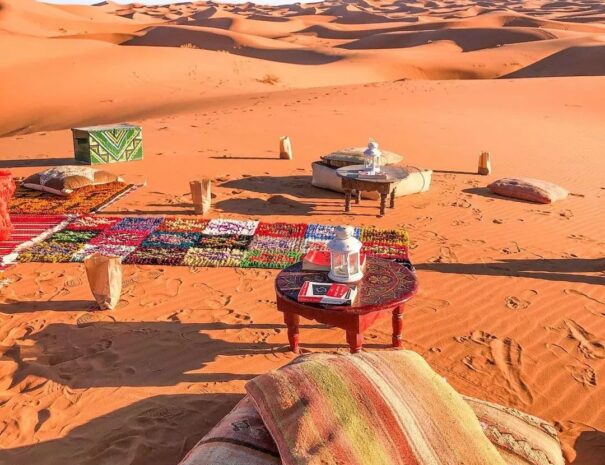
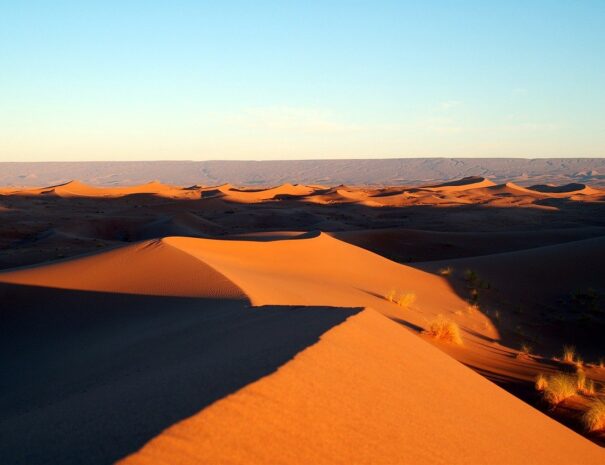
Desert tours from Errachidia sites:
On our Errachidia tours, there is a lot to see and do. As a consequence, the best places to see on our desert trips are included. It is typically best to have a solid grasp of the places or towns you will be visiting.
Do you have any questions about our most popular trip destinations? Please contact us if you have any questions.
Ifrane, little Moroccan Switzerland:
Our first destination on our tours from Errachidia is the city of Ifrane. It is a Moroccan city located in the province of Ifrane, near to Fez and Meknes. It has a population of 13,380 people, according to 2014 statistics. In addition, the city is one of the oldest Moroccan villages built on mountain summits. It is located at a height of 1,655 meters above sea level. As a result, it has a harsh environment, and its mountains are regularly blanketed with snow throughout the winter months.
Original name:
There are numerous caves around Ifrane. As a result, Ifrane is an Amazigh word for “cave.” Orti, which means orchard or garden in Amazigh, was another name for the city. Aside from its natural beauty, the city is now known as “Small Switzerland.” Not to mention its urban architecture, which rivals that of European cities.
History of Ifrane:
Residents lived in tunnels and caves carved in limestone in the rock of Wadi Tizkwit in the area of Ifrane and its surrounds around the sixteenth century AD. Following that, the inhabitants spent several years reconstructing their above-ground houses. As a result, we’ve discovered a slew of caverns beneath animal shelters. In addition, there may be storage rooms for personal goods or agricultural products and equipment.
The city had developed to the extent when Sultan Al-Rashid bin Ali Al-Sharif gave it feudalism by the mid-seventeenth century A.D. They then provided pastures to tribal groups while the tribes in the Ifrane-Azrou region were under to French colonial control, and the resistance lasted until 1922 AD.
Tourism in Ifrane:
Because of its beautiful weather, Ifrane is considered as one of the best places to visit. As a result, it became a popular destination for Moroccan families, whether from the same city or from harsher locations like Fez and Meknes. Wild fishing enthusiasts may also be found on the city’s outskirts during the fall season. However, visitors from other nations are also affected, in addition to Moroccans. The city draws a huge number of foreign tourists who come to snowboard in the winter and fall. Not to note that this activity has more than one winter stop, such as Michlifen Station, which has resorts, restaurants, and a beginner’s ski service.
Most of our tours that start from Errachidia pass by Ifrane. Book your tour!
Merzouga
Merzouga is famous for having Morocco’s highest dunes, with peaks offering some of the best sunrise and sunset views in the nation. As a result, it is the primary attraction of our Errachidia desert tours.
Your gaze will be attracted to the enormous golden sand dunes of Erg Chebbi as you leave Rissani or Erfoud. The Merzouga dunes, which dance over the horizon, are another name for it. It’s a great place with beautiful natural colors. Desert landscapes dominate the region, with “Ergi” (clusters of sand – dunes) and “Hamads” (rocky dust) interwoven with dry rivers and oasis. Not to mention that the original nomadic people has mainly settled in little villages and cities in the surrounding and coastal regions. The most well-known are Merzouga (the most developed), Hassi Labied, and Khamlia. The region is home to several tribes of Arabs, Berbers, and Gnaoua, resulting in a harmonious ethnic mosaic.
Location of Merzouga:
Merzouga is a small Saharian village located in south-eastern Morocco, around 50 kilometers from the Algerian border. Merzouga is situated on the fringes of the Erg Chebbi dunes. Merzouga is also located in Errachidia, in the Draa-Tafilalet region. Merzouga is also 35 km from Rissani, 45 km from Erfoud, and 128 km from Errachidia.
The 560-kilometer journey from Marrakesh to Merzouga winds through the mountains. As a result, the bus journey lasts around 12 hours and may be tiresome.
History of Merzouga:
Merzouga itself has a recent history, although the surrounding area has been inhabited since prehistoric times. In the surrounding region, there are numerous ancient fortified villages. French soldiers constructed Merzouga in the nineteenth century after winning the battle of Tafilalet in 1916-1932.
The legend’s origin story:
There is a legend that has been passed down through the years about the Erg Chebbi dunes that there was once a true rainforest here.
According to legend, God turned this region into a desert because the people refused to welcome and feed a poor and starving lady while they sat in luxury, mistaken their hands for milk, and played with a handful of couscous.
The divine wrath descended on these people, converting the lush forest into a desert beset by heat, water scarcity, and sand storms.
Surprisingly, the 1,000-year-old epical art discovered in this site portrays animals like elephants and giraffes living in lush green environments.
Whatever your opinions are on this mythology, the Erg Chebbi dunes are one of the most beautiful places on the globe.
Merzouga today:
Merzouga is the major tourist attraction in this region of Morocco due to its proximity to the magnificent dunes of Erg Chebbi.
Tourism boomed in the region after a strengthened road to Merzouga was built in 2002. Despite the effects of uncontrolled growth, the hotel industry has developed significantly in Merzouga, as well as neighboring Errachidia and Erfoud.
Unsustainable dunes camping tourism has resulted in overuse of water resources and an inability to meet wastewater treatment standards. The Moroccan government has taken the necessary steps to protect the ecosystem in the future, such as mandating the removal of all whips from the dunes. Legal campgrounds can only be located at the bottom of the dunes; contribute to sustainable tourism by refusing to accept illegal camping in the dunes. Dunes camps provide the same fascinating experience.
Merzouga is home to Morocco’s largest body of groundwater. Because of the distinctive subsurface khetteras conduits, residents have been using them for decades.
Merzouga Sand is a popular filming location, and it was used in the 1962 film “Lawrence of Arabia,” starring Peter O’Toole and Omar Sharif. Brendan Fraser and Rachel Weish appeared in “Mumia” (1998), while Jean Claude Van Dame featured in “Legionist” (1997). Scenes from a James Bond film were shot in the nearby Rissani landscape (“Specter”).
Festivals in Merzouga and nearby:
- The Erfoud Date Festival – occurs every October, it is a colorful exhibition of Berberian culture where you can buy the freshest dates, date syrups, and other goods.
Merzouga International Music Event — a spring music event that attracts both local and international performers.
Rally 4L Trophy Rally – French Rally, widely regarded as the world’s largest rally for drivers under the age of 28. For more than a decade, it has captivated young fans of the original, superb Renault 4L. (acceptable age 18-28 years). Almost 1000 cars will participate in the rally! The rally lasts 10 days and covers 6000 kilometers and takes place in late February and early March.
How to prepare for your stay in Merzouga:
Cover your head when you’re in the desert, regardless of the season. Sun protection creams and glasses are essential for avoiding sunburns.
The best UV and dehydration protection available. In the desert, however, light shirts, long-sleeved leggings, and colors will be worn for body protection.
We recommend bringing a scarf since it is quite flexible; it may be used as a covering for the arms (for females) or head, as well as a carrier for a bottle of water or a towel.
Bring light clothing for the day and warm clothing for the night if visiting the desert in the winter: wool socks, merino wool sweater. Don’t forget to have a bottle of water with you at all times.
Don’t forget to bring your camera! You’ll ultimately arrive at Morocco’s most beautiful sand dunes. Take into account how the sand will fit into every nook and hole. Unless you have a camera or a dust-resistant phone, choose a tight case.
Weather in Merzouga:
Merzouga’s weather is characterized by aridity and extreme heat.
At July and August, daytime temperatures on Merzouga can reach 45°C or more in the dunes, and nighttime temperatures seldom dip below 24°C. Even in the summer, a long-sleeved shirt is useful since the higher you are on the beach, the colder you will be.
During the winter, daytime temperatures vary from 10 to 18°C, while nighttime temperatures fall below zero. You will want a warm coat and a hat.
Merzouga is best visited in the spring (March to May) and fall (September to November) (between September and November). This time of year, the temperature is excellent, not too hot during the day and not too cold in the evenings.
The Kasbah of Ait Benhaddou:
Ksar At Ben Haddou, concealed behind a large pile of stones, is one of Morocco’s most beautiful and historic monuments.
Introduction:
In contrast to the Sahara Desert, Morocco’s Ouarzazate province is historically significant. The district is densely packed with sites depicting the way of life of the people who lived in this region for thousands of years, set against a backdrop of desert landscapes that blend dunes, oasis, and rocky mountains. These locations are usually open to the public and include beautiful kasbahs, palaces, and Ksours, Berber walled cities made of clay, wood, and straw.
Ouarzazate’s fame grew among historians, travelers, and other interested parties, making it one of Morocco’s most famous tourist sites. The fascinating One of the most frequented places is Ben Haddou, which is about 25 kilometers from the city. It’s a village full with homes, Ruelas, watchtowers, mosques, squares, terraces, and kasbahs, all encircled by a massive fortification. It is now bustling with tiny shops and Moroccan art workshops. The city is reached through a bridge that spans the Ounila River, and its facade can already be seen from afar; exceptionally well maintained, the edifice looks to have sprung from a magnificent oasis on the flume’s edge.
History:
Ksar At Ben Haddou, established in 757, was a key halt for medieval trade routes and nomadic populations moving between Marrakesh and the Sahara Desert. The handicraft tents set up in the city’s buildings have brought color to the city’s otherwise dreary streets. Carpets, ceramics, clothes, and other Brazilian specialties are available in the city’s various tents and businesses.
When visiting the fortress, one may understand the structure’s historical significance to Moroccans. Every few feet, tiny and sinuous alleys appear, reflecting and roofing creating magnificent panoramas. Widescreen panoramas emerge from each hill, with tall structures in a symmetrical design that have been carefully preserved. These characteristics highlight the charm, complexities, and rustic beauty of this Moroccan region’s traditional architecture.
After traveling through the historic site’s alleys and lanes, the visitor arrives at the top of the mountain where the city is located. The peak offers a beautiful view of At Ben Haddou and the new metropolis farther ahead, giving it an ideal location to watch the sunset at Destiny.
It would be wonderful to remark that At Ben Haddou has cinematic scenery, and the historic site “ground color” has a particular charm and scenic attractiveness. The landscape has caught the imagination of many filmmakers, who have used it as a background for a variety of Hollywood, European, and series films, including Gladiator, Indiana Jones, and Game of Thrones. Today, Ouarzazate’s most popular tourist attraction draws people from all over the world, who stroll through the city’s narrow and twisting alleyways in search of remnants of local history and the chance to explore into one of the world’s most important archeological sites.
Marrakech, the red city:
After Rabat and Casablanca, Marrakesh is Morocco’s third-largest city. The city is situated in the southwest of the nation, at the foot of the beautiful Atlas Mountains. In addition, Marrakesh has a population of little more than one million people, and it’s worth mentioning that the country’s name – Morocco – is a twisted form of the city’s name. Until recently, Morocco was spoken in the same way as Marrakech in Iran.
Aside from our Errachidia desert tours. We could also organize excursions from Marrakech.
History of Marrakech:
Jusuf Tashfin, the founder of the Al-Murabitins family, designed Marrakesh. This happened around the end of 1062. The city grows under the rule of Jacob Al-Mansura, with a particular penchant for extravagant buildings. During his rule, the mosques of Kutubija and El-Mansuria were erected. The minaret of the Kutubija Mosque is 70 meters tall. Marrakesh was ruled by the Marynide dynasty in the thirteenth century and the Saadi dynasty in the sixteenth century, when the capital was moved from Fez to Marrakesh. One of the city’s major historical attractions is the El-Badi Palace, which was built by the Saadi and includes a network of their local tombs.
Marrakesh is captured by revolutionaries led by Al-Hiba in 1912, but the city quickly falls into the hands of the French, who establish a protectorate over the nation.
Marrakesh attractions:
The bulk of Marrakesh’s attractions are located in the city’s ancient area, known as the Medina, which was inscribed to the UNESCO World Cultural Heritage list in 1985. The glinobite structures and reinforcements of the medina have a reddish color, which is why it is sometimes referred to as a “red city.” Jamaa al-Fina Square, one of the most fascinating medicinal locations, is famous for its acrobats, cartoonists, dancers, musicians, and other artisans. It is Marrakech’s throbbing heart.
Furthermore, Marrakech is well-known for its gardens and parks; visitors must see the Menara olive grove, the lovely Agdal gardens, and the massive palm forest that begins immediately beyond the old town.
There are numerous other sites and locations to see on our Errachidia trips, and we’d like to share our findings with you on one of our tours.